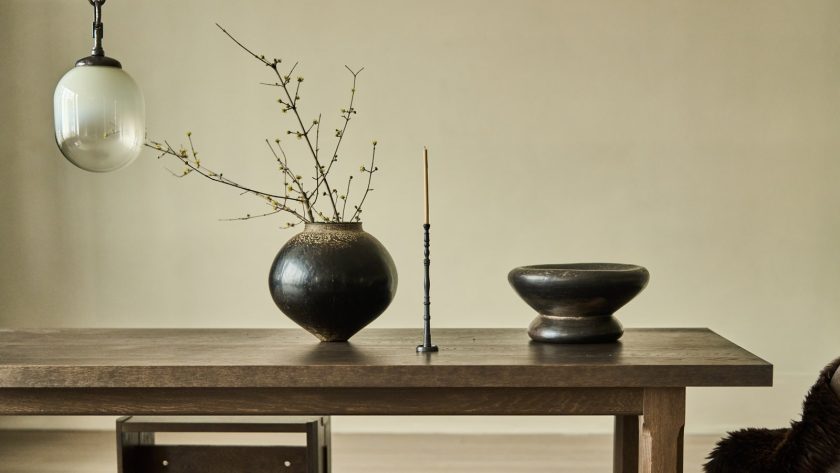Japandi’s central characteristics, according to interior designer Jeremiah Brent, are the following: “craftsmanship, texture, balance, and serenity.” Think natural woods, earthy materials, neutral color palettes, as well as uncluttered spaces accented with functional objects like vases and mugs over decorative ones. Natural light, too, is prioritized, often employed in an artistic, almost Vermeer-like way. “Furnishings and objects are kept to a minimum,” King says. “A certain thing was made for a certain job, there is a strong sense of appropriateness, of order, and of place. Japandi designs come from a close relationship with nature and were decided by the combining of materials, techniques, and usage.” A Japandi room looks, and feels, honest.
Some notable Japandi spaces? The Aman in New York City, L/Uniform’s store in Saint Germain, as well as Roman and Williams’s RW Guild and Gallery, which specializes in showcasing products from Japanese and Scandinavian artisans.
Photo: Gentl & Hyers
According to Japandi Living by Laila Rietbergen, published by Lanoo, the style’s origins trace back to the 1860s. A Danish naval lieutenant, William Carstensen, sailed to Tokyo (then called Edo) to explore the country, whose borders had opened just 10 years earlier. He developed an obsession with their culture. When he returned to Denmark, he published a book of his findings titled Japan’s Capital and the Japanese. It piqued the interest of Copenhagen’s creative crowd: “Danish designers traveled to this new, intriguing world and discovered that the Japanese concept ‘wabi-sabi’ celebrated the same principles as the Danish concept ‘hygge’: an appreciation of minimalism, natural materials, and simplicity,” Rietbergen, who also runs the Instagram account @japandi_design, writes. “From that time, Nordic designs started to become influenced by the aesthetic.”



